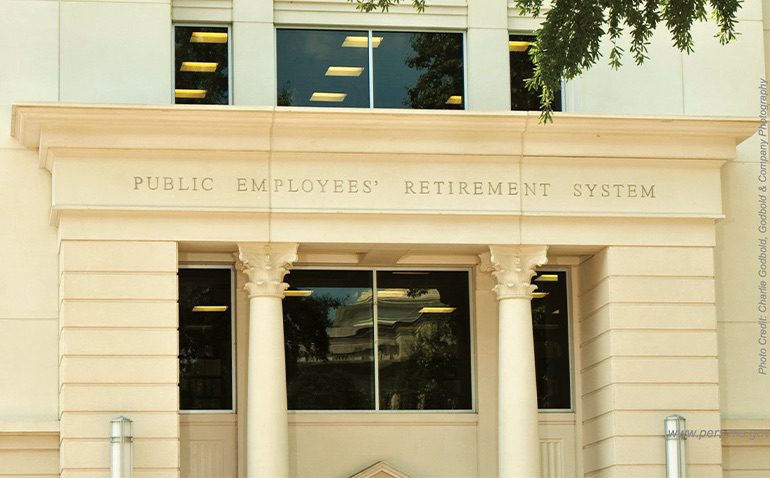
Bigger Pie Forum says whether it’s IHL or the State of Mississippi, rising pension costs affect more than government budgets.
IHL’s BOND RATING
A recent column by Mississippi Institutions of Higher Learning (IHL) Commissioner Dr. Al Rankins provided an overview of the system’s strong bond rating, which Dr. Rankins attributed to good stewardship through debt savings, reduced energy costs, and pooled insurance and other subscriptions.
We congratulate Dr. Rankins, the IHL Board of Trustees, and university presidents for working collaboratively to improve the financial position of IHL. Their efforts have worked, as reflected through the system’s strong financial position.
GROWING PENSION DEBT
Yet, risks outside the control of IHL remain. Did you know that universities contribute about 16% of all state retirement contributions? Last year, public universities and their employees paid $282.3 million to cover pension costs – and the number keeps growing.
But contribution payments aren’t the only financial costs to our state’s higher education system caused by a struggling pension system. In fact, growing pension debt increases the risk profile of Mississippi and all her public bodies, including Institutions of Higher Learning (IHL). This is recognized by credit rating agencies, which evaluate fiscal health of institutions to determine credit outlook and, in effect, the cost of borrowing money.
WEIGHTY IMPACT OF IHL CARRYING PERS DEBT
Just this month, Moody’s assigned a strong rating to IHL (Aa2), reflecting the organization’s strong financial oversight and operating position. However, as both Dr. Rankins and the Moody’s report noted, factors that could lead to a downgrade of the IHL bond rating including an “increase in required state pension plan contributions.” Additionally, Moody’s noted that the “substantial debt-like liability from…the state’s underfunded defined benefit pension plans adds significantly to total adjusted debt and overall leverage.”
This isn’t the first time Moody’s or other credit rating agencies highlighted the risk of PERS liabilities. A May 2023 Moody’s report included similar warnings.
Likewise, Fitch Ratings highlighted the weighty impact of IHL carrying PERS debt: While IHL had $1.18 billion of outstanding debt at the end of fiscal year 2022, Fitch adjusted this metric to include “debt equivalents” like PERS obligations. The result? IHL’s debt increases to $5.2 billion – with most of this increase related to IHL’s participation “in Mississippi’s Public Employment Retirement System (PERS) and a resulting Fitch-calculated $3.9 billion net pension liability.” While Fitch views IHL’s position favorably, the rating agency also notes its debt ratios, including pension liabilities, are slim for the rating category due to “significant state pension liabilities.”
So why does this matter? If a rating agency downgrades IHL’s credit outlook, it signals to investors that the debt is risky and results in higher interest rates – and saddles taxpayers with more and more costs.
Here’s an example. While both Mississippi and IHL have positive credit ratings currently, those scores are at risk due to factors like rising pension costs. If either entity saw a credit downgrade, it will result in millions in new costs to taxpayers, depending on borrowing totals.
Consider a simple example. If we use the average interest rates for AA and BB investments as of November 30 for a $100 million capital project with a 30-year term, we see a significant difference in costs to Mississippi taxpayers.
| HL Capital Project: $100M | Total Interest Paid |
| AA (5.12%) | $95,904,572 |
| BB (6.81%) | $134,932,918 |
| Increased cost to taxpayers | $39,028,346 |
Beyond IHL, the State of Mississippi has a higher risk profile due to the impact of PERS. In fact, a Fitch Ratings action commentary noted the risk of increased employer (i.e., taxpayer) contributions to PERS, saying they “may continue to rise given a history of inadequate pension contribution practices.” The report also found Mississippi’s net tax-supported debt and adjusted unfunded pension obligations totaled 8.7 percent of personal income – well above the 4.7 percent state median for this metric nationally. Fitch says the burden is roughly evenly split between debt and pension liabilities, but “the latter of which has been gradually increasing given pension funding issues.”
Moody’s, another credit rating agency, recently suggested the state’s credit rating could be downgraded due to risk factors like persistent growth in debt or pension burdens, and said our state’s “financial strengths are balanced by low income levels, elevated debt levels, [and] rising pension costs.”
Whether it’s IHL or the State of Mississippi, rising pension costs affect more than government budgets. We implore lawmakers to tackle the PERS challenge and keep the cost of capital low to taxpayers.










